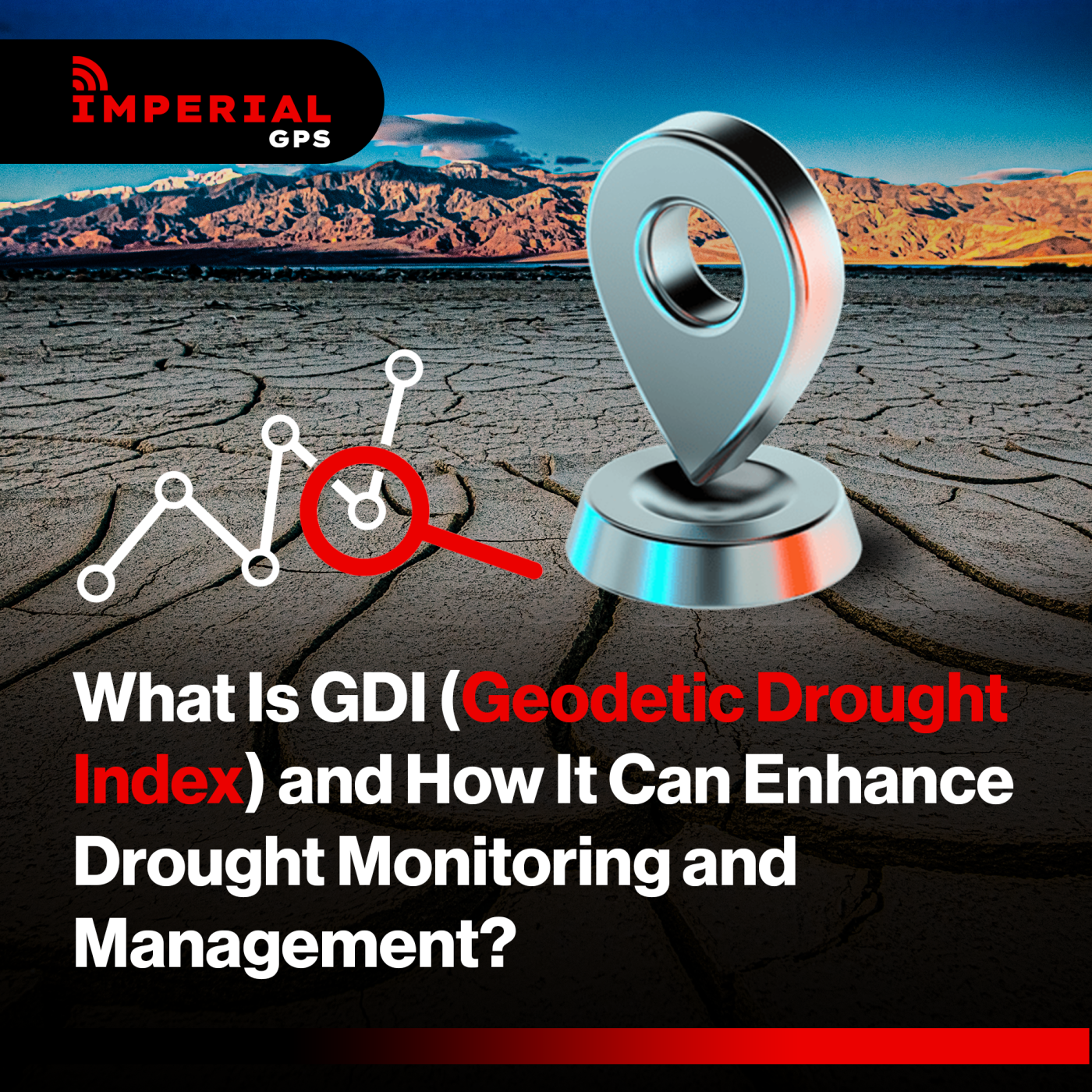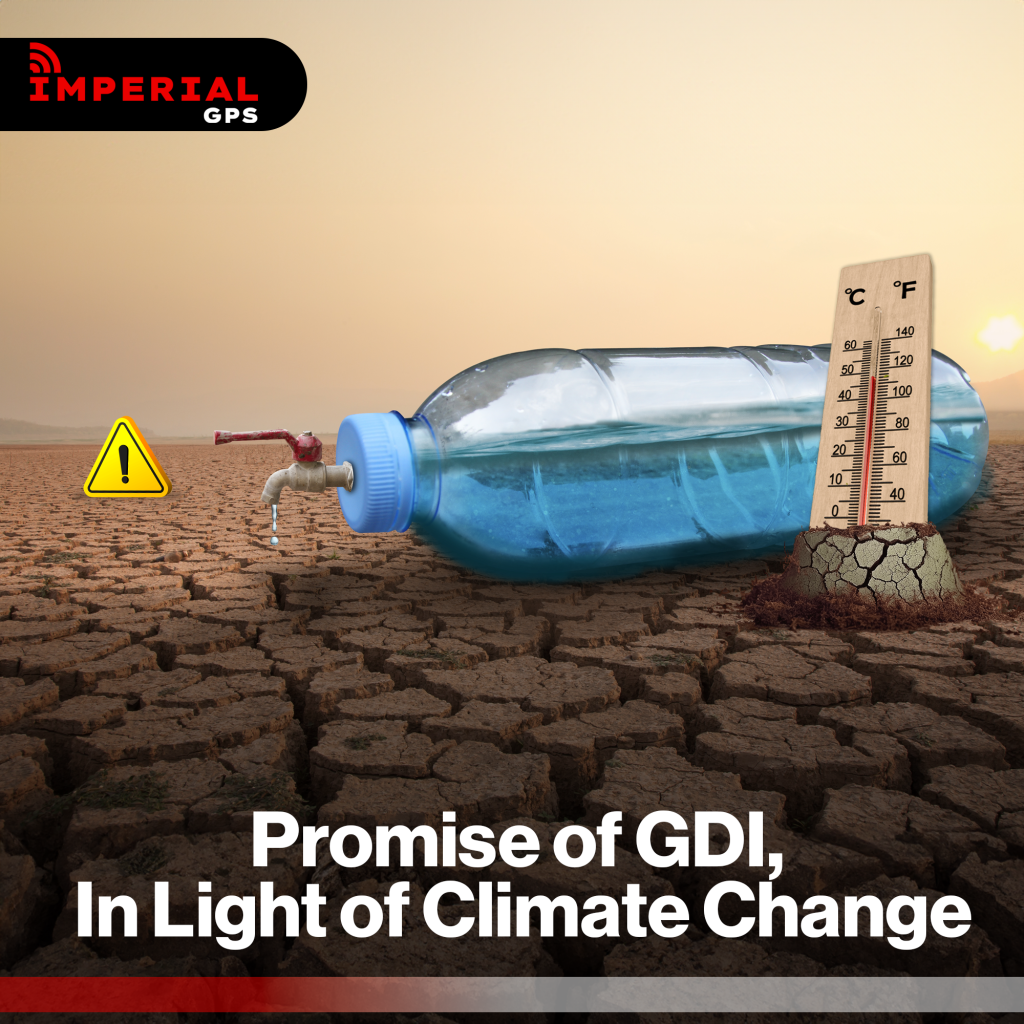What Is GDI (Geodetic Drought Index) and How It Can Enhance Drought Monitoring and Management?

Droughts have historically posed huge challenges for California. This is because California is highly dependent on water for agricultural, industrial and residential consumption. Traditional metrics being used to predict droughts were also insufficient. They only focused on weather data for predictions and overlooked another important aspect that is water availability in subsurface and surface reservoirs. However, latest developments in GPS (Global Positioning System) technologies, have provided an alternative and promising drought metric. This metric is GDI (Geodetic Drought Index).
This blog will explore GDI and how it enhances drought monitoring and drought management. We will use the example of California to clarify its applications. We will also discuss the promise GDI holds for water management amid global climate change, along with limitations that prevent GDI from being more widely adopted.
Why Traditional Drought Assessment Methods Were Insufficient?
Traditional drought assessment methods in California included Palmer Drought Severity Index (PDSI) and the U.S. Drought Monitor. These methods primarily focused on weather reports. While these methods incorporated meteorological data, it overlooked the availability of water in ground or water bodies.
TWS (Total Water Storage) has a huge role in determining drought intensity. It consists of all types of water storage from soil moisture to groundwater. TWS variations can be effectively monitored by GDI by using GPS data.
How Does GDI Work? (Using the Example of California)
The GDI employs three-dimensional GPS data. When there is water in the system, the surface of the earth is weighed down. It sinks. Similarly, during dry periods, the surface of the earth shifts vertically up, as the weight of the water is lifted. These vertical and horizontal land movements can be effectively detected by GPS technology. By monitoring these changes in surface levels, GDI can effectively assess water storage.
GDI has proved to be a highly effective tool for local drought assessments in California. Changes in GDI closely reflect changes in water levels in reservoirs and groundwater in Northern California. In other words, there is a strong correlation between changes in GDI and changes in surface-reservoir storage and groundwater levels in Northern California. The correlation between changes in GDI and changes in water levels is also strong in Southern California but the time scales are different. Changes in GDI over a 12-month span, for example, more effectively reflects changes in groundwater level in Southern California. Whereas, for Northern California, a 3 month-time scale is sufficient.
Such regional distinctions highlight GDI’s sensitivity to unique underground water resources and water flow patterns. This sensitivity can be used to identify the distinct nature of underground water resources and water flow patterns of an area. This is valuable information as it can facilitate better localized decisions regarding drought responses.
It is notable that these findings contrast sharply with traditional meteorological drought indices, which did not provide such comprehensive TWS retention details. Integrating GDI can, therefore, significantly enhance both the accuracy and effectiveness of drought management strategies.
Limitations to Adopting GDI as a Drought Assessment Tool
While GDI is more effective than traditional drought assessment methods, there are certain limitations to using it. One notable limitation is that GDI requires a lot of data from GPS stations. These GPS stations should be long-standing and continuously operating. Only then, could they offer the quality and quantity of data that is required by GDI to make accurate assessments.
We cannot simply start measuring data when there is a drought. We need to have data before that, as well. This is because, if we only have data of during a drought, it might mislead us to believe that these are the “normal” water levels. Whereas, those water levels might only be during the drought period and not outside of that. Thus, to get a complete and accurate picture of the situation, we should collect data over a long period of time.
Another reason why GDI is not widely adopted as a drought assessment tool is its dependence on GPS data. GPS infrastructure is not currently available everywhere. Expanding the availability of GPS infrastructure and networks is a prerequisite for the widespread adoption of GDI as a drought assessment tool.

Promise of GDI, In Light of Climate Change
GDI is a very important tool for effective drought monitoring. In light of climate change and how the phenomenon is affecting water availability, GDI is becoming even more important. GDI can facilitate informed decisions regarding water consumption, leading to improved water management.
GDI can accurately measure atmospheric river events, that is, how much water from the ocean is coming to the land. The more water moves inland, the less intense a drought is. With the information GDI can provide, areas can assess their drought situation better and consequently, respond better to it.
To fully reap the benefits of the GDI tool, we must invest in GPS networks. Investment in GPS infrastructure promises long-term benefits in effective management of water through precise drought monitoring by GDI.
Imperial GPS: Your Trusted Partner
Need precise, reliable data? Imperial GPS offers cutting-edge solutions tailored to your needs. Our advanced GPS technology collects real-time data, so you can make data-driven decisions to improve operations.
With Imperial GPS, you can make informed decisions based on reliable data, empowering you to protect and manage your precious resources. Contact us to get more information.
Conclusion
GDI is a huge improvement over traditional drought assessment methods. It offers a lot more information and accuracy. It is a significant advancement in the field of drought monitoring that can facilitate better decisions and sustainable water management practices. With expansion in GPS infrastructure and availability of GPS data over longer timespans, GDI will become even more effective. Amid the changing climatic conditions, we can utilize GDI to manage water resources more effectively in the future.
References
For further reading and detailed insights, refer to the paper:


